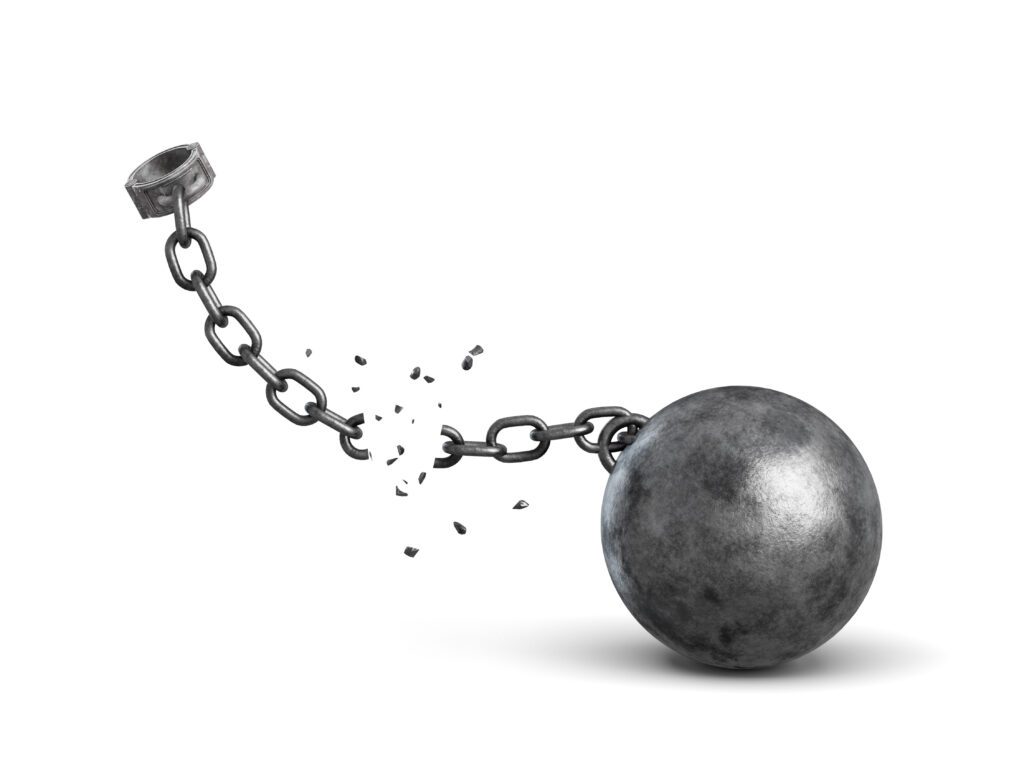Living paycheck to paycheck can feel like a never-ending financial treadmill.
It means you rely on your current paycheck to meet your basic needs, such as paying rent or mortgage, utilities, groceries, and other essential expenses. You are left with little or no money at the end of the month to save, invest, or pay off debts. It is a cycle that can feel overwhelming and leave you trapped in a financial struggle.
There’s no way to look to the future—because you can’t afford to save any money yet. Living with constant anxiety about making ends meet each month, waiting for one of those “life happens” moments that can quickly zero out your bank account.
Sound familiar? You’re not alone. Today, 78% of U.S. workers live paycheck to paycheck. But if you’re stuck in this cycle, you don’t have to stay there. It’s not sustainable in the long run, and it can seriously affect your financial health. An unexpected expense, such as a car repair or medical bill, can cause financial stress and potentially lead to debt. Moreover, living paycheck to paycheck can prevent you from reaching your financial goals, such as buying a home, starting a business, or saving for retirement.
Here’s how to jump off.
9 Ways to Stop Living Paycheck to Paycheck
Living paycheck to paycheck means you rely on your current paycheck to meet your basic needs, such as paying rent or mortgage, utilities, groceries, and other essential expenses. You are left with little or no money at the end of the month to save, invest, or pay off debts. It is a cycle that can feel overwhelming and leave you trapped in a financial struggle.
1.) Know where your money goes
The first step to breaking the cycle of living paycheck to paycheck is creating a budget to understand your expenses and income. Make a list of all your monthly bills, including rent/mortgage, utilities, groceries, transportation, and any other expenses you have. Once you clearly understand your expenses, you can start to identify areas where you can cut back. Also include your income sources, salary, side hustles, or other income streams. Once you have a complete list of your income and expenses, subtract your expenses from your income to determine your net income. If your net income is negative, you are spending more than you earn and need to adjust your expenses accordingly.
2.) Cut back on expenses
One of the most effective ways to stop living paycheck to paycheck is to cut back on expenses. Look for areas where you can save money, such as cooking at home instead of eating out, using coupons when shopping, and cancelling subscriptions you don’t use. Small changes can add up over time, so don’t underestimate the power of cutting back.
3.) Build an emergency fund
Start by setting a savings goal for your emergency fund, such as $1,000 or three months of living expenses. Then, save a portion of your income until you reach your goal. An emergency fund can provide you with a sense of security and prevent you from going into debt when unexpected expenses arise.
4.) Increase your income
- Take on a part-time or seasonal job
- Start a side hustle from home
- Sell unused items from your home and closet
- Negotiate a raise
- Find a higher-paying job or career path
Another way to achieve financial stability is to increase your income. Look for ways to earn extra money, such as by taking on a side job, selling items you no longer need, or freelancing in your area of expertise. Increasing your income can help you repay debt faster and build up your savings.
5.) Pay off debts
Paying off debts is a crucial step to achieving financial stability. High-interest debts, such as credit card debts, can affect your income and prevent you from saving or investing.
Start by focusing on your highest-interest debt first, then work your way down. Consider consolidating your debt into a lower-interest loan to make it more manageable.
Monitor your credit report often. If you see any collections debt, consider using Cambio’s AI-powered negotiation tool to remove them from your credit report.
6.) Invest in your future
Investing in your future is another key component of achieving financial stability. Consider opening a retirement account, such as an IRA or 401(k), and start contributing regularly. This will help you build up your retirement savings and secure your financial future. Check out Cambio’s 0% interest credit builder loan!
7.) Seek professional help
If you’re struggling to achieve financial stability, it may be time to seek professional help. Consider working with a financial advisor or credit counselor who can provide guidance and support as you work toward your financial goals.
You can break the cycle
Living below your means isn’t just an expression, it’s a lifestyle choice. By choosing to spend less than you earn, and using shopping hacks to save more money while not abusing your credit, you’re making the choice to live an easier, stress-free financial life.
Living below your means won’t just help boost your bank account, it will also help you learn how to manage your money, which is truly one of the best skills worth having. Living paycheck to paycheck can be stressful and overwhelming, but it doesn’t have to be a permanent state.
Remember that changing a habit can be hard, but jumping off that paycheck-to-paycheck treadmill with the right tools and discipline is possible and worth it.
Learn how to jumpstart your way to financial freedom today with Cambio.



